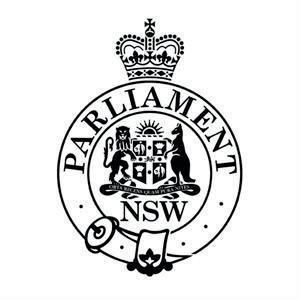
3 minute read
POSTIVE WHITE SPOT DETECTION IN WILD-CAUGHT SCHOOL PRAWNS SOUTH OF BALLINA ALARMING
The positive detection of large traces of the white spot virus in wild-caught school prawns south of Ballina yesterday is a further blow to the commercial fshing industry across the region with Clarence River estuary fshers already impacted by a twoyear biosecurity lockdown, according to Clarence Nationals MP, Richie Williamson.
Mr Williamson said he understood the current discovery of the white spot virus came from routine batch testing of wild-caught school prawns from the inshore ocean area south of Ballina off the Richmond River by the NSW Department of Primary Industries (DPI), not from a prawn farm as was the case in the Clarence.
“This is alarming as it is the frst confrmed detection of white spot in wild school prawns in NSW directly collected from ocean waters, not associated with a white spot outbreak. It has the potential to wipe-out our local prawn industry,” Mr Williamson said.
“I’m calling on the NSW Labor Government not to drag its heels on responding to this serious event and provide a support package to commercial fshers in the Ballina and Evans Head region that refects the gravity of the situation.
“It needs to provide commercial fshers with the same level of support that was provided to those in the Clarence last year.
“The NSW Government was pretty slow to respond to the plight of Clarence commercial fshers who were on their knees last year, so it needs to act more swiftly this time around.
“It is also time for the Federal Labor Government to get serious about biosecurity measures in place to protect our shores from imported prawns.
“We have this bizarre situation where there is a control order on the movement of green prawns from one section within NSW, but the control order stops at the nation’s border allowing the importation of raw prawns from white spot infected countries with only ‘batch testing’ occurring.
“Why the Federal Government continues to allow green prawns to be imported into Australia from countries where the disease is endemic beggars belief. We are certainly not on a level playing feld.”
Mr Williamson said he understood a new control zone will be established to cover the Richmond and Wilsons rivers, and ocean waters outside the mouth of the Richmond River restricting the movement of green (uncooked) school and king prawns and other decapod crustaceans to minimise risks of spread while further testing and investigations take place to determine if it is related to previous detections in Queensland and NSW.
“What this means for the current Clarence River Control Order already in place and the wider implications remains to be seen, but I will be watching this very closely,” Mr Williamson said.
White spot confrmed in wildcaught prawns near Evans Head White spot syndrome virus (WSSV) has been detected by the NSW Department of Primary Industries (DPI) in wild-caught school prawns (Metapenaeus macleay), from the inshore ocean area near Evans Head.
The WSSVpositive prawns were collected on 29 April 2024 for routine testing as part of the national white spot surveillance program, with DPI Elizabeth Macarthur Agricultural Institute (EMAI) testing of 195 prawns in pools of fve, revealed 36 out of 39 pools were positive for WSSV.
The Australian Centre for Disease Preparedness (ACDP) confrmed positive results for WSSV on Wednesday 8 May 2024 and genetic testing is being conducted to confrm the DNA of the WSSV to check any relationships with previous detections in Queensland and NSW.
NSW DPI Chief Veterinary Offcer, Jo Coombe said a new control zone has been established to minimise risks of spread of WSSV to other parts of NSW and Australia.
“This is the frst confrmed detection of white spot in NSW wild school prawns, collected directly from ocean waters not associated with a clinical white spot disease outbreak,” Dr Coombe said.
“The control zone restricts the movement of green, uncooked, school and king prawns and other decapod crustaceans, beach and other polycheate worms out of the area.
“Mud, blue swimmer, three spot and spanner crabs, lobsters and ugs are excluded from the movement restrictions.
“DPI is leading the response to the positive detection and is committed to keeping stakeholders and industry informed.
“Evidence from the investigation, surveillance and genomic sequencing of WSSV will be critical to informing effective management.”
White spot does not pose a threat to human health or food safety. NSW seafood, including prawns, remains safe to eat.
The Clarence River Control Zone remains in place to support a plan which aims to self-declare freedom from WSSV according to requirements of the World Organisation for Animal Health.
Biosecurity white spot disease clarence river control order number 2 2023 (nsw.gov.au)-Scan the QR Code: For more information, including the new control zone, visit the NSW DPI website.











